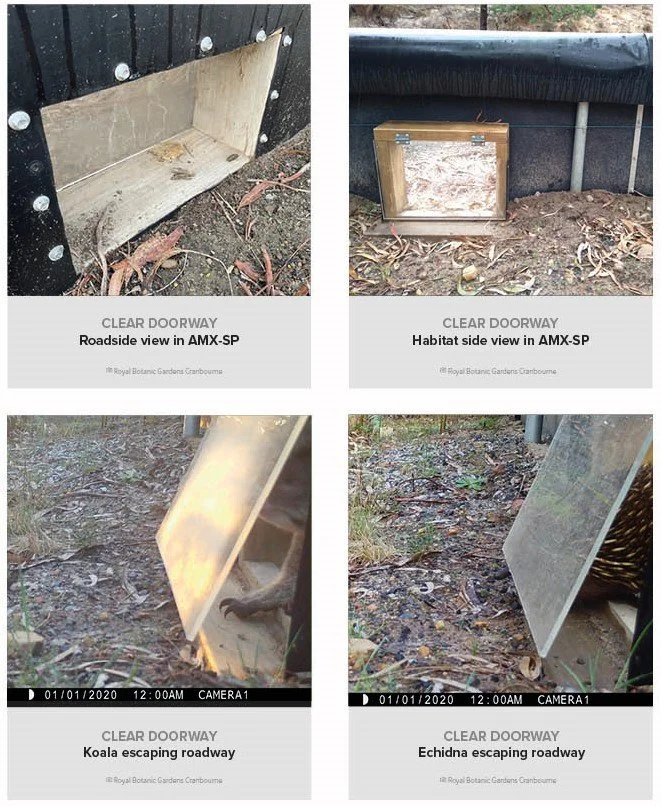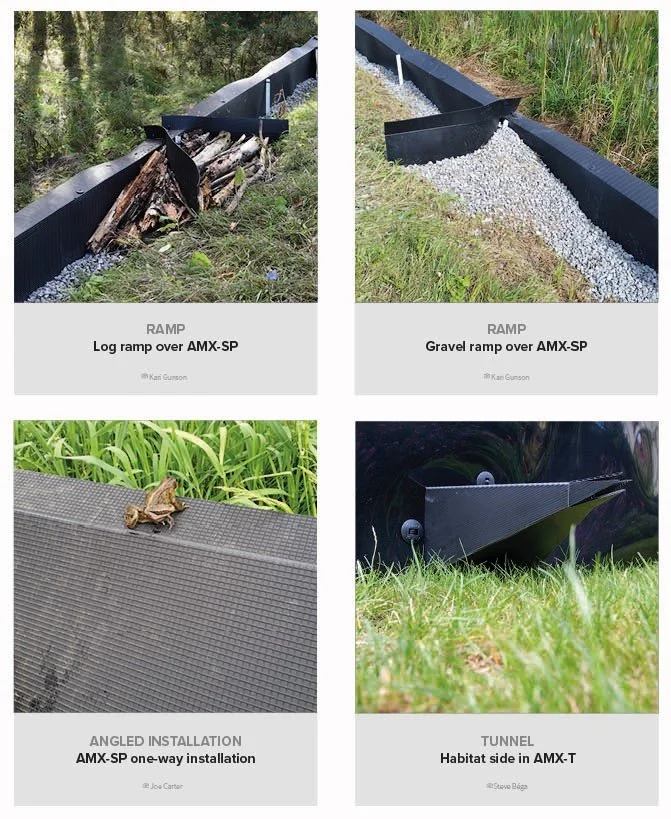One-Way Escapes
One way escapes are commonly used in temporary fencing applications to allow animals to passively escape areas before construction as part of surveys and trans-locations. Escapes are also used on permanent projects, especially linear infrastructure projects to mitigate the impacts of the fence end effect.
Unfortunately on linear projects fences often come to an end. Although we can design turn-arounds and fence layouts to mitigate this (details coming in a future chapter) there are frequent instances where animals are able to enter and encounter the wrong side of the fence and need a way to return to safety.
There are various ways one-way escapes have been used successfully and new methods are being developed and tested continually. Here we have presented some popular examples that have been successful for reptiles, amphibians and small mammals across the world to date.
The exact location, frequency, size and type will need to be pro-actively considered and adjusted to suit each project. There isn’t a one size fits all solution.
Key points to consider:
Size of opening / suitability / type used for differnet species & situations
Adding a cross-section to encourage movement through or over
Using different one-way escape types on same fence line may help
Keep flaps / doors clear of debris
NOTES:
This specification should be used to aid installation. Measurements are NOT TO SCALE and may need to be adjusted dependent on location, conditions and local authority recommendations.


